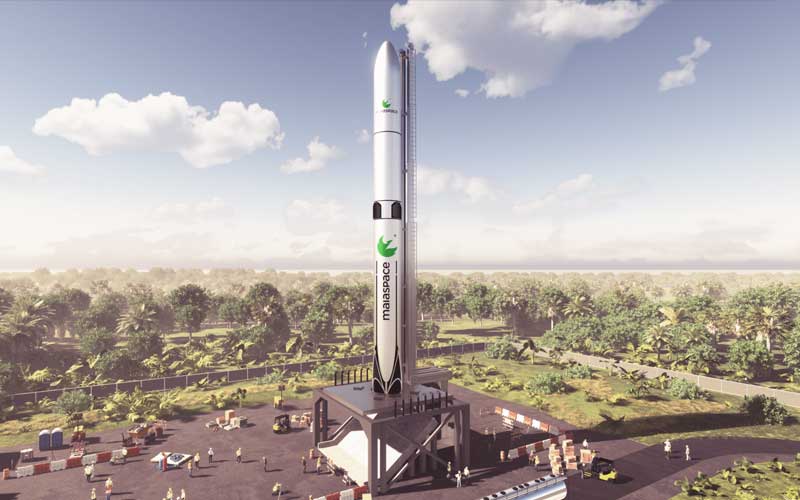
ArianeGroup has committed to increasing its investment in the company’s launch startup subsidiary, MaiaSpace, from approximately €40 million to €125 million.
MaiaSpace was founded in late 2021 with the aim of developing a partially reusable microlauncher. The standard two-stage configuration of the Maia vehicle will be capable of deploying 1,500 kilograms into low Earth orbit when the first stage is expended and 500 kilograms when it is being recovered. However, with the addition of the Colibri kick stage, the vehicle’s performance will increase to 2,500 kilograms to low Earth orbit when the first stage is expended.
Since its founding, ArianeGroup has invested approximately €40 million into the fledgling launch company. This has allowed MaiaSpace to grow to over 115 employees, construct a prototype of the Maia second stage, which has undergone cryo testing, and test-fired the engine that will power the Colibri kick stage all in just two years of operation.
As MaiaSpace pushes forward to its ambitious goal of a maiden launch attempt in 2025, ArianeGroup has committed an additional €85 million to the cause. This makes the company one of the most well-funded launch startups in Europe, surpassing Orbex’s €115 million and only falling short of the impressive €310 million raised by Isar Aerospace. However, the €125 million invested in MaiaSpace doesn’t tell the whole story.
To boost the pace at which it develops Maia, MaiaSpace is utilizing the work done by ArianeGroup for its ESA-contracted Themis and Prometheus programmes. Maia will utilize three Prometheus engines for its first stage and a single vacuum-optimized Prometheus engine for its second stage. As for Themis, considering recent reporting confirming that Maia will stand at 50 metres tall, it’s likely that the very little of the 30-metre tall Themis booster will be left behind.
To date, over €300 million in combined funding has been spent on Themis and Prometheus. This, when added to the €125 million supplied by ArianeGroup, is a more accurate but not perfect overview of the funding that has gone and that will still go towards the development of Maia.




